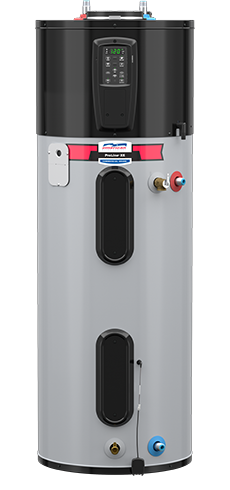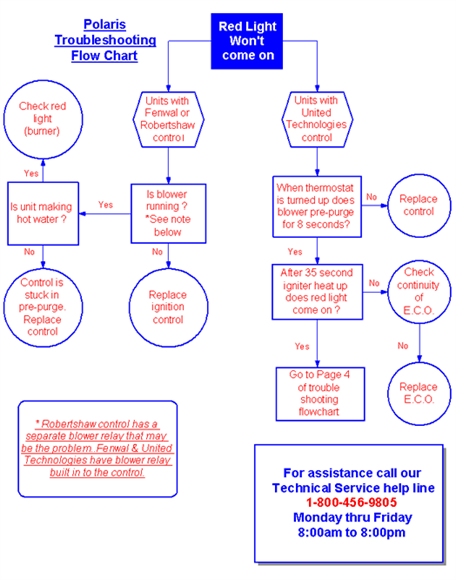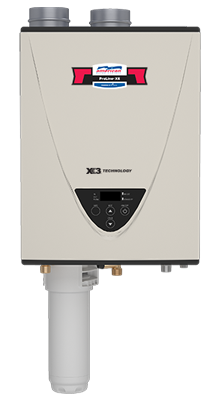You’ve just stepped into your shower, expecting a warm cascade to start your day, but instead, you’re met with icy disappointment. Sound familiar?
If your American water heater isn’t doing its job, you’re not alone—and you don’t have to feel helpless. Troubleshooting a water heater might seem daunting, but with a little guidance, you can tackle common issues without breaking a sweat. Imagine the satisfaction of identifying the problem yourself and saving on potential repair costs.
We’re here to guide you through easy-to-follow steps that could turn your cold water woes into a warm success. Get ready to discover solutions that could transform your water heater’s performance and make your mornings blissful again.

Credit: www.americanwaterheater.com
Page Contents
Common Issues
American water heaters often face issues like inconsistent temperatures and leaking tanks. Faulty thermostats or sediment buildup can cause these problems. Regular maintenance helps ensure efficient functioning and longevity.
When your American water heater starts acting up, it can throw a wrench in your daily routine. From taking a comforting shower to doing laundry, we often take hot water for granted until it’s gone. Understanding common issues can empower you to troubleshoot effectively, saving time and possibly money. Here are some typical problems you might encounter and how to address them.No Hot Water
Have you ever been ready for a hot shower only to be greeted with icy water? This could be due to a tripped circuit breaker or a faulty thermostat. Check your circuit breaker first—reset it if necessary. If that doesn’t work, the thermostat might need replacing. Always remember to turn off the power before tinkering with the thermostat.Insufficient Hot Water
Running out of hot water halfway through a shower can be frustrating. This often happens if the water heater is too small for your household’s needs. Consider upgrading to a larger unit if this is a frequent issue. Alternatively, checking the thermostat settings could reveal that they’re too low—adjust them slightly for a quick fix.Water Temperature Fluctuations
Water that suddenly goes from hot to cold and back again is not just annoying, it’s perplexing. Mineral buildup on heating elements can cause this issue. Regularly flushing the tank can help prevent this problem. Have you tried it recently? If not, it might be time.Leaking Water Heater
A leaking water heater isn’t just inconvenient; it can also damage your home. Check for leaks around the tank or pipes. Tightening loose connections or replacing the T&P valve may solve the problem. If the tank itself is leaking, it might be time for a replacement. Can you relate to any of these issues? Taking a proactive approach to maintenance can often keep these problems at bay. Have a tip that works for you? Share it in the comments below!Diagnostic Tools
When your American water heater shows issues, using the right tools is vital. Diagnostic tools help identify problems quickly. This ensures efficient repairs and maintenance. Knowing how to use these tools saves time and money. Below, explore key tools for troubleshooting.
Thermometer Usage
A thermometer measures water temperature accurately. Attach it to the water heater’s outlet pipe. This gives a clear reading of the water temperature. Ensure the water is around 120°F for safety. A higher or lower reading indicates a thermostat issue.
Multimeter Testing
A multimeter tests electrical components in your water heater. It checks voltage, resistance, and continuity. Set the multimeter to the correct function. Test the heating elements and thermostat for faults. A faulty reading requires replacement of the component.
Inspecting For Leaks
Leaks can cause serious water heater problems. Visually inspect the heater and surrounding area. Look for water puddles or dampness. Feel around the tank and pipes for moisture. Leaks may indicate a failing valve or cracked tank. Address leaks promptly to avoid further damage.
Maintenance Practices
Maintaining your American water heater is crucial for its longevity and efficiency. Regular maintenance helps avoid unexpected breakdowns and costly repairs. By adopting simple practices, you can ensure your water heater runs smoothly and efficiently. Let’s dive into some essential maintenance practices that can make a significant difference.
Regular Flushing
Flushing your water heater is a simple yet effective practice. Sediments can build up over time, reducing efficiency and shortening the heater’s lifespan. Draining the tank helps remove these sediments.
Consider doing this once a year. It’s straightforward: turn off the heater, attach a hose to the drain valve, and let the water flow out. You might be surprised at how much debris comes out!
Have you ever noticed a rumbling noise? That’s often due to sediment buildup. Regular flushing can silence those annoying sounds and keep your heater running quietly.
Anode Rod Inspection
The anode rod is your water heater’s unsung hero, preventing rust inside the tank. Checking it every year can prevent major issues. Simply unscrew the rod and inspect it. If it’s corroded, replace it.
Imagine it like changing the oil in your car. It’s a small task that can prevent significant damage. Replacing a worn anode rod is far cheaper than replacing the entire heater.
Ask yourself: when was the last time you checked the anode rod? If it’s been a while, it might be time to give it some attention.
Temperature And Pressure Relief Valve Check
This valve is vital for safety, preventing your heater from overheating or building too much pressure. Test it annually to ensure it’s working properly. Lift the lever, and if water comes out, it’s functioning.
If it doesn’t, you may need a replacement. This check is quick and gives peace of mind knowing your water heater is safe. It’s like having a reliable friend you trust to keep things in check.
Ever thought about the consequences of a faulty valve? It’s not just about efficiency, but safety. A simple test can prevent serious mishaps.
By adopting these practices, you’ll extend the life of your water heater, save money, and ensure a reliable supply of hot water. Isn’t that worth a little effort?

Credit: www.americanwaterheater.com
Repair Techniques
American water heaters are reliable but may need repairs. Understanding repair techniques can save time and money. Simple fixes can restore efficiency and extend lifespan.
Replacing Heating Elements
Heating elements heat water in your tank. If they fail, water stays cold. First, turn off power at the breaker. Drain the tank using the drain valve. Remove the access panel and insulation. Use a wrench to unscrew the faulty element. Replace with a new element, securing it tightly. Refill the tank and restore power. Check if water heats properly.
Adjusting Thermostats
Thermostats control water temperature. If water is too hot or cold, adjust them. Turn off power to the heater. Remove the access panel and insulation. Locate the thermostat and use a screwdriver to adjust the temperature setting. Recommended setting is 120 degrees Fahrenheit. Replace the insulation and panel. Turn the power back on. Test the water temperature after a few hours.
Fixing Leaks
Leaks can cause water damage and increase bills. First, identify the leak source. Check connections and valves for drips. Tighten any loose connections with a wrench. If the leak persists, inspect the tank. A corroded tank may need replacement. For minor leaks, use a sealant to patch the area. Monitor closely to ensure the leak stops.
Safety Precautions
When dealing with any appliance, especially water heaters, safety should be your top priority. American Water Heater troubleshooting can be straightforward if you keep safety measures in mind. Imagine the inconvenience of a sudden electrical shock or a burst of hot water causing burns. Wouldn’t you rather spend a few minutes ensuring everything is safe before starting?
Electrical Safety Measures
Before you dive into the troubleshooting process, make sure the power supply to your water heater is switched off. This simple step can prevent electrical shocks, which can be life-threatening.
Use a voltage tester to ensure there’s no residual electricity. It’s better to be safe than sorry. Ever tried fixing something only to realize it’s still powered? It’s an unpleasant surprise you want to avoid.
Inspect the wiring for any visible damage or wear. Frayed wires can be dangerous. If you notice anything unusual, consider calling a professional.
Handling Pressure Build-up
Water heaters can build up pressure over time. This pressure, if not managed properly, can cause leaks or even an explosion.
Check the pressure relief valve to ensure it’s functioning correctly. It should release pressure automatically when it gets too high.
If you hear unusual noises or see water leaking around the heater, it’s a sign of pressure issues. Think of it as your heater’s way of telling you something’s wrong.
Preventing Scalding
Hot water can scald skin in seconds. Setting your water heater to a safe temperature can prevent painful burns.
A temperature setting of around 120 degrees Fahrenheit is generally considered safe. Have you ever experienced a sudden blast of hot water in the shower? It’s not pleasant.
Teach family members, especially children, how to adjust the water temperature safely. Wouldn’t it be comforting to know everyone in your household can handle hot water safely?
By prioritizing these safety measures, you not only protect yourself but also extend the life of your water heater. What other safety checks can you add to make your home safer?
Choosing Replacement Parts
Selecting the right replacement parts is crucial in American water heater troubleshooting. Ensure parts fit the model for efficient repair. Reliable components can enhance the heater’s performance and lifespan.
When your American water heater starts to give you trouble, knowing how to choose the right replacement parts can save you time and money. It’s not just about fixing the issue at hand—it’s about ensuring longevity and efficiency. The right parts can make the difference between a temporary fix and a long-term solution. But how do you know you’re picking the right ones? Let’s dive in.Identifying Correct Parts
First, identify the specific parts you need. Check your water heater model number, usually found on a sticker on the side of the tank. This number is your best friend when searching for compatible parts. Look for visible damage or worn-out components. A rusty anode rod or a faulty thermostat might be the culprit behind your heater’s poor performance. Consult your heater’s manual or a professional if you’re unsure. It’s better to ask questions now than to face bigger problems later. Have you ever replaced a part only to find it doesn’t fit? Frustrating, isn’t it?Where To Buy
Purchasing parts is easier today than ever before, thanks to online and local stores. Websites like Amazon or Home Depot offer a wide range of options with customer reviews to guide you. Consider buying directly from the manufacturer’s website. This ensures you get genuine parts designed specifically for your model. Local hardware stores can be a goldmine for parts, and staff often have the expertise to help you choose the correct items. Have you ever had a friendly shopkeeper save your project with a simple tip?Installation Tips
Before installing new parts, ensure the power and water supply to the heater are turned off. Safety first, always. Use basic tools like a wrench or screwdriver, but be gentle to avoid causing further damage. Remember the time you overtightened a bolt and ended up with a bigger mess? Follow the instructions that come with the replacement parts. They’re there for a reason and can prevent costly mistakes. Test your water heater after installation. Listen for unusual noises or leaks that might indicate something isn’t quite right. Have you ever felt the satisfaction of fixing something yourself? It’s rewarding, isn’t it? Choosing the right replacement parts is crucial for maintaining your American water heater’s performance. By identifying the correct parts, purchasing from reliable sources, and following installation tips, you can tackle your water heater issues with confidence. What’s your next step?Professional Assistance
Professional assistance often becomes essential for water heater issues. Some problems require expert knowledge and tools. Professional help ensures safety and efficiency. Let’s explore when to seek expert assistance and how to find reliable services.
When To Call A Professional
Strange noises from your heater? Call a professional. No hot water at all? It’s time for expert help. Water leaks around the unit? A professional should inspect it. Gas leaks are dangerous. Always call an expert for gas-related issues. Complex electrical problems also need professional intervention. Don’t risk DIY with these situations.
Finding Reliable Services
Seek recommendations from friends and family. Check online reviews for honest feedback. Verify credentials and licenses before hiring. Local service providers often offer quicker responses. Look for companies with years of experience. They usually have proven expertise. Customer support matters. Choose services that offer good communication.
Cost Considerations
Service costs vary based on the issue. Minor repairs may cost less. Complex problems can be expensive. Obtain multiple quotes before deciding. Look for transparent pricing without hidden fees. Some companies offer maintenance packages. These might save money in the long run. Prioritize quality over cheap services. Investing in good service ensures longer-lasting results.

Credit: www.americanwaterheater.com
Frequently Asked Questions
How To Reset American Water Heater?
To reset an American water heater, locate the reset button on the thermostat. Press it firmly until you hear a click. Ensure the power supply is connected and check the circuit breaker. This should restore the heater to its default settings.
What Causes No Hot Water Issue?
No hot water can be caused by a tripped circuit breaker or faulty thermostat. Additionally, sediment buildup may affect heating efficiency. Regular maintenance and checks can prevent these issues.
Why Is My Water Heater Leaking?
Leaks may result from a faulty pressure relief valve or corroded tank. Inspect connections and tighten them if necessary. Regularly check for rust to avoid tank deterioration and potential leaks.
How To Fix A Noisy Water Heater?
Noisy heaters are often due to sediment buildup or loose elements. Flush the tank to remove sediment and tighten elements. Regular maintenance can help prevent noise and improve efficiency.
Conclusion
Troubleshooting your American water heater can seem challenging. But it doesn’t have to be. Start by checking common issues like thermostat settings. Also, inspect for leaks or strange noises. Simple maintenance can extend the heater’s life. Always prioritize safety and turn off the power before repairs.
Consult a professional if problems persist. Regular checks can prevent future hassles. Keep your water heater running smoothly. Happy troubleshooting!
